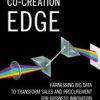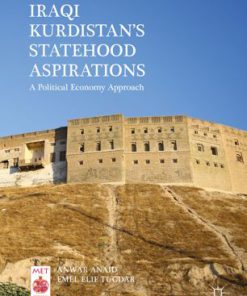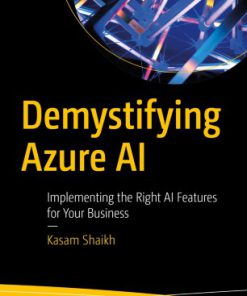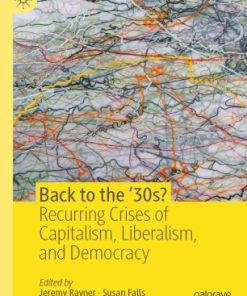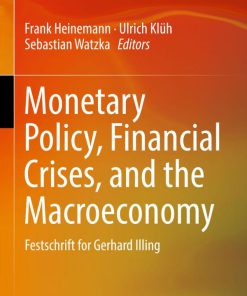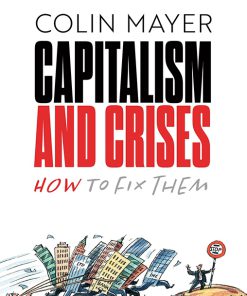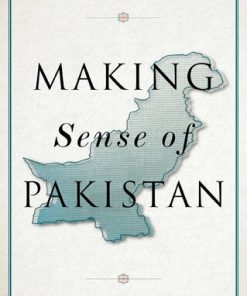Capitalism Competition Conflict Crises 1st edition by Anwar Shaikh 0199390630 9780190298340
$50.00 Original price was: $50.00.$25.00Current price is: $25.00.
Capitalism: Competition, Conflict, Crises 1st edition by Anwar Shaikh – Ebook PDF Instant Download/DeliveryISBN: 0199390630, 9780190298340
Full download Capitalism: Competition, Conflict, Crises 1st edition after payment.
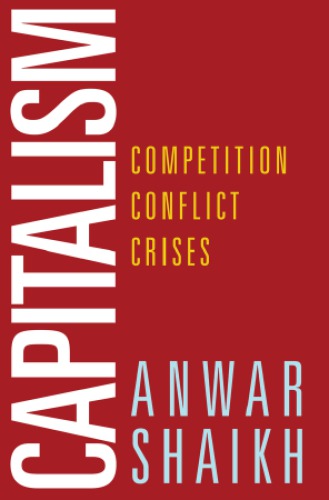
Product details:
ISBN-10 : 0199390630
ISBN-13 : 9780190298340
Author: Anwar Shaikh
In Capitalism, Anwar Shaikh demonstrates that most of the central propositions of economic analysis can be derived without any reference to hyperrationality, optimization, perfect competition, perfect information, representative agents or so-called rational expectations. These include the laws of demand and supply, the determination of wage and profit rates, technological change, relative prices, interest rates, bond and equity prices, exchange rates, terms and balance of trade, growth, unemployment, inflation, and long booms culminating in recurrent general crises.
Capitalism: Competition, Conflict, Crises 1st Table of contents:
Part I: Foundations of the Analysis
1. Introduction
I. The Approach of the Book
1. Order and disorder
2. Neoclassical response to the real duality
3. Keynesian and post-Keynesian response to the real duality
4. Different purpose of this book
II. Outline of the Book
1. Part I: Foundations of the analysis
2. Part II: Real competition
3. Part III: Turbulent macro-dynamics
2. Turbulent Trends and Hidden Structures
I. Turbulent Growth
II. Productivity, Real Wages, and Real Unit Labor Costs
III. The Rate of Unemployment
IV. Prices, Inflation, and the Golden Wave
V. The General Rate of Profit
VI. Turbulent Arbitrage
VII. Relative Prices
VIII. Convergence and Divergence on a World Scale
IX. Summary and Conclusions
3. Micro Foundations and Macro Patterns
I. Introduction
II. Micro Processes and Macro Patterns
1. Representing individual human behavior
2. Representing aggregate behavior
3. Aggregate relations, micro foundations, and the question of rigor
III. Shaping Structures, Economic Gradients, and Aggregate Emergent Properties
1. Analytical framework for robust microeconomics
2. Downward sloping demand curves
3. Income elasticities and Engel’s Law
4. Aggregate Consumption and Savings Functions
5. Simulations: Insensitivity of aggregate relations to micro foundations
IV. Methodology for Economic Analysis
V. Turbulent Gravitation
1. Equilibration as a turbulent process versus equilibrium as an achieved state
2. Statics, dynamics, and growth cycles
3. Differences in the temporal dimensions of key economic variables
VI. Summary and Central Implications
4. Production and Costs
I. Introduction
II. Production in Economic Theories
1. Circulating versus fixed investment
2. Classical and conventional national accounts
3. Production and non-production labor
III. Production Relations Versus Production Functions
1. Structural and temporal dimensions of production
2. Social and historical determinants of the length and intensity of the working day
3. Empirical evidence on the relations between work conditions and labor productivity
IV. Production at the Level of a Firm
1. Work conditions and “re-switching” along the microeconomic production possibilities frontier
2. Output and production coefficient under socially determined work conditions
V. Cost, Prices, and Profits
1. Assumed shapes of cost curves in neoclassical, neo-Ricardian, and post-Keynesian theories
2. Cost curves under general conditions of the labor process
3. Implications of general cost curves for various economic arguments
VI. Empirical Evidence on Cost Curves
5. Exchange, Money, and Price
I. Introduction
II. The origins of modern money
1. Money commodities
2. Coins
3. Money tokens
4. Inconvertible tokens, forced currency, and fiat money
5. Banks, credit, and money
6. Essential functions of money
i. Money as medium of pricing
ii. Money as medium of circulation
iii. Money as medium of safety
III. Classical Theories of Money and the National Price Level
1. Classical theories of money
2. The basic structure of Marx’s theory of money
3. The key elements in Marx’s theory of money
4. Empirical patterns with respect to Marx’s theory of money
IV. Toward a Classical Theory of the Price Level Under Modern Money
1. The determination of relative prices with convertible tokens
2. The determination of relative prices with inconvertible tokens
3. Further issues
6. Capital and Profit
I. Introduction
II. The Two Sources of Aggregate Profits
III. Production, Labor Time, and Profit
1. No aggregate profit without surplus labor
2. Positive profits require surplus labor
3. General rule for measuring real economic profits
4. The puzzle of the effects of relative prices on aggregate profit
IV. Aggregate Profits and Transfers of Value: a General Solution to the Universal “Transformation Problem”
1. Transfers of value via changes in relative prices
2. The influence of output proportions on transfers of value and aggregate profit
V. Financial profits and profit-on-transfer
VI. Theories of Aggregate Profit in Various Schools
VII. Critical Review of the Literature on the Effects of Relative Prices on Aggregate Profit
VIII. Measurement of Profit and Capital
Part II: Real Competition
7. The Theory of Real Competition
I. Introduction
II. Real Competition within an Industry
III. Real competition between industries
IV. Real Competition and the Notion of Regulating Capitals
V. General Phenomena of Real Competition
VI. Evidence on Real Competition
1. The behavior of the firm
i. Oxford Economists Research Group (OERG) and Hall and Hitch
ii. Andrews and Brunner
iii. Harrod’s revision of imperfect competition
iv. Price-cutting and entry in the business literature
2. Empirical evidence on operating costs of plants: Salter
3. Choice of technique under price-taking versus price-cutting
4. Empirical evidence on firm-level costs, capital intensity, and profits
5. Empirical evidence on equalization of regulating rates of profit
i. Defining measures of average and regulating rates of profit
ii. Empirical evidence for OECD countries
iii. Econometric tests of profit rate equalization
VII. Debate on Competition, Choice of Technique, and Profit Rate
1. The feasible range of competitive prices
2. Economy-wide implications of the choice of technique
3. Implications of the choice of technique for the time path of the general profit rate
8. Debates on Perfect and Imperfect Competition
I. Theoretical Views
1. Classical views
i. Smith
ii. Ricardo
2. Marx
i. Regulating capital
ii. Choice of technique
iii. Bias of technical change
3. The theory of perfect competition
i. Rise of the visions of perfect competition and perfect capitalism
ii. Walras and general equilibrium
iii. Walras and Marshall
iv. Walras and modern neoclassical economics
v. Crucial role of price-taking behavior
vi. Critiques of perfect competition
vii. Externalities and the Coase Theorem
4. Perfect competition requires irrational expectations
i. Perfect knowledge contradicts perfect competition
ii. The failure of the Quantity Theory of Competition
iii. The need for competitive firms to consider demand
iv. Keynes and Kalecki on macro implications
v. Patinkin on macro implications
5. Schumpeter’s views
6. Austrian views
i. Hayek
ii. Von Mises
iii. Kirzner
iv. Mueller
v. General assessment of Austrian economics
7. Marxian monopoly capitalism theory
8. Rise of theories of imperfect competition
i. From perfect to imperfect competition
ii. Sraffa’s early critique of the theory of the firm
iii. Chamberlin and Robinson
iv. The neoclassical counterattack
9. Kalecki and post-Keynesian views
i. Kalecki’s price theory
ii. Post-Keynesian price theory
10. Modern classical views
i. Basic positions on the relation of market prices to prices of production
ii. Price-taking versus price-setting
iii. Firm size and the degree of competition
II. Empirical Evidence on Competition and Monopoly
1. Introduction
2. Traditional indicators of oligopoly and monopoly power
3. Price rigidity and monopoly power
4. Profitability and monopoly power
5. Empirical evidence on profit rates and monopoly power
6. Empirical evidence on profit margins and monopoly power
7. Collusion and Profitability
9. Competition and Inter-Industrial Relative Prices
I. Introduction
II. Simple Commodity Production
III. The Fundamental Equation of Price: Adam Smith’s Derivation
1. Fundamental Equation applies to all prices
2. The Fundamental Equation for Relative Price
3. Damping effects of vertical integration
IV. Measuring the Distance Between Relative Prices and their Regulators
1. Numerical example of effects of changes in units
2. Deficiencies of regression analysis for cross-sectional analysis
3. Defining the appropriate measure of deviations
V. Evidence on Market Prices in Relation to Direct Prices
1. Cross-sectional evidence
2. Time-series evidence
3. The Schwartz–Puty tests of the Ricardian time-series hypothesis
VI. Prices of Production, Direct Prices, and Market Prices
1. Theoretical issues
2. Numerical example
VII. Evidence on Prices of Production as Functions of the Rate of Profit in Relation to Direct Prices and Market Prices
1. Circulating capital model
2. Implications of linear output–capital ratios
3. Fixed capital model
VIII. Empirical Distance Measures
IX. Empirical Evidence on Prices of Production at the Observed Rate of Profit in Relation to Direct and Market Prices
1. Cross-sectional evidence
2. Resolving the puzzle of the distance of market prices from production and direct prices
3. Time-series evidence
X. Wage–Profit Curves, 1947–1998
XI. Origins and Developments of the Classical Theory of Relative Price
1. Classical origins
2. Modern theoretical developments
i. Sraffa
ii. Sraffian branches
iii. Debate on the theory of relative prices
iv. The neoclassical theory of distribution and employment
3. Modern empirical evidence
XII. Summary and Implications of the Classical Theory of Relative Prices
10. Competition, Finance, and Interest Rates
I. Introduction
1. Interest rates
2. Net rate of profit
3. Term structure
4. Orthodox and heterodox theories of the interest rate
5. Bond prices
6. Equity prices
7. Financial arbitrage
II. Competition and Interest Rates
1. Competition and the banking sector
2. Profit rate of enterprise
3. Relation of the interest rate to the price level and the profit rate
4. Implications of the classical theory of the interest rate
5. A structural theory of the yield curve
III. Competition and the Stock Market
IV. Competition and the Bond Market
V. Summary of the Classical Theory of Finance
VI. Empirical Evidence
1. Equalization of bank regulating rate of profit
2. Equalization of bank loan rate with corporate bond yield
3. Equalization of interest rates of similar financial assets
4. Interest rates do not reflect fixed markups on the base rate
5. Profit rate and the interest rate
6. Interest rates and prices
VII. A Critical Survey of Interest Rate Theories
1. Interest rate theories have two dimensions
2. Smith, Ricardo, and Mill
3. Marx
4. Neoclassical and Keynesian theories of the level of interest rates
i. Arbitrage equalizes rates of return
ii. Two further issues: Interest rate levels and term structure
iii. Neoclassical theory of the level of interest rates
iv. Keynesian and Hicksian theories of the level of interest rates
v. Post-Keynesian theories of the level of the interest rate
5. Neoclassical and Keynesian theories of the term structure of interest rates
i. Keynes and Hicks on the term structure
ii. Post-Keynesian theories of the term structure
6. Panico’s synthesis of the classical and Keynesian approaches
VIII. Stock Market Theories
1. Arbitrage and modern finance theory
2. Arbitrage and equity valuation
11. International Competition and the Theory of Exchange Rates
I. Introduction
1. Theory of trade is a critical part of debates on costs and benefits of globalization
2. Neoliberalism theory and practice
3. Proponents of neoliberalism
4. Critics of neoliberalism
5. Debate appears to be about perfect versus imperfect competition
6. Real competition does not imply comparative costs: Resituating the debate
II. The Theoretical Foundations of Conventional Trade Policy
1. Conventional free trade theory
2. Two crucial premises: Comparative costs and full employment
3. Comparative costs
4. Full employment
5. Summary of standard trade theory
6. Problems with standard trade theory
III. Reactions to the Problems of Standard Trade Theory
1. Reaction 1 to problems of standard theory: Slow adjustment
2. Reaction 2 to problems of standard theory: Introduce imperfections
IV. Ricardo’s Principle of Comparative Cost
1. Real competition
2. Ricardo also begins from profit-seeking firms
3. Ricardo on macroeconomic consequences of unbalanced trade
4. Fixed versus flexible exchange rates
5. Transformation of rule of absolute costs to rule of comparative costs
6. Ricardo’s shift from trade undertaken by capitals to trade undertaken by nations
7. Numerical example of the Ricardian adjustment
V. Real Competition Implies Absolute Cost Advantage
1. Introduction
2. The first difficulty: Feedback from prices to cost
3. The second difficulty: Trade imbalances and balance of payments
4. The classical theory of free trade
5. Regulating capitals in an international context
i. Prices of production prior to trade
ii. Comparative costs
iii. Absolute costs
iv. Benchmark case of equal technical compositions but different efficiencies
v. Complete independence of comparative cost from relative prices in the benchmark case
vi. General case
vii. The Smithian decomposition
viii. Integrated comparative real costs
ix. Three possible outcomes in classical 2 x 2 case
x. The intermediate case is the general one
xi. Tradable and nontradable goods
xii. Purchasing Power Parity and the Law of One Price
xiii. Purchasing Power Parity and the compositional component of the real exchange rate
ivx. Actual costs as proxies for regulating costs
6. Trade balances, capital flows, and the balance of payments
7. Summary of the classical approach to free trade
VI. Empirical Evidence
1. The persistence of empirically weak theoretical models as a guide to policy
2. Empirical evidence on the relation between real exchange rates and real costs
3. Implications of the classical approach to long-run exchange rates
People also search for Capitalism: Competition, Conflict, Crises 1st:
capitalism competition conflict crises pdf
shaikh a 2016 capitalism competition conflict crises
capitalism competition conflict crises goodreads
capitalism competition conflict crises reddit
capitalism. competition conflict crises (2016)
Tags: Capitalism, Competition, Conflict, Crises, Anwar Shaikh
You may also like…
Computers - Programming
Demystifying Azure AI : Implementing the Right AI Features for Your Business Kasam Shaikh
Politics & Philosophy - Anthropology
Business & Economics
MONETARY POLICY FINANCIAL CRISES AND THE MACROECONOMY Heinemann
Cookbooks
Uncategorized
Politics & Philosophy - Government & Politics
Making Sense of Pakistan 1st edition by Farzana Shaikh 9780190929114 0190929111



